Abstract
Rotavirus specific IgA, secretory component, and IgG were measured by enzyme linked immunosorbent assay in 20 pairs of mothers and babies to estimate antibody transfer from the mother, particularly from breast milk to neonatal faeces. Colostrum contained high titres of specific IgA and secretory component, which decreased gradually. Faeces after breast feeding for three days showed detectable titres of IgA and secretory component, with further increases by seven days. There was a positive correlation between titres of secretory component in breast milk and in faeces. To clarify the mechanism of high anti-rotavirus activity in breast milk, ratios of rotavirus specific IgA in maternal serum samples to breast milk were calculated and compared with those that were herpes simplex virus specific. Significantly higher concentrations were obtained for the herpes simplex virus specific samples, indicating that anti-rotavirus IgA is selectively produced in breast tissue.
Full text
PDF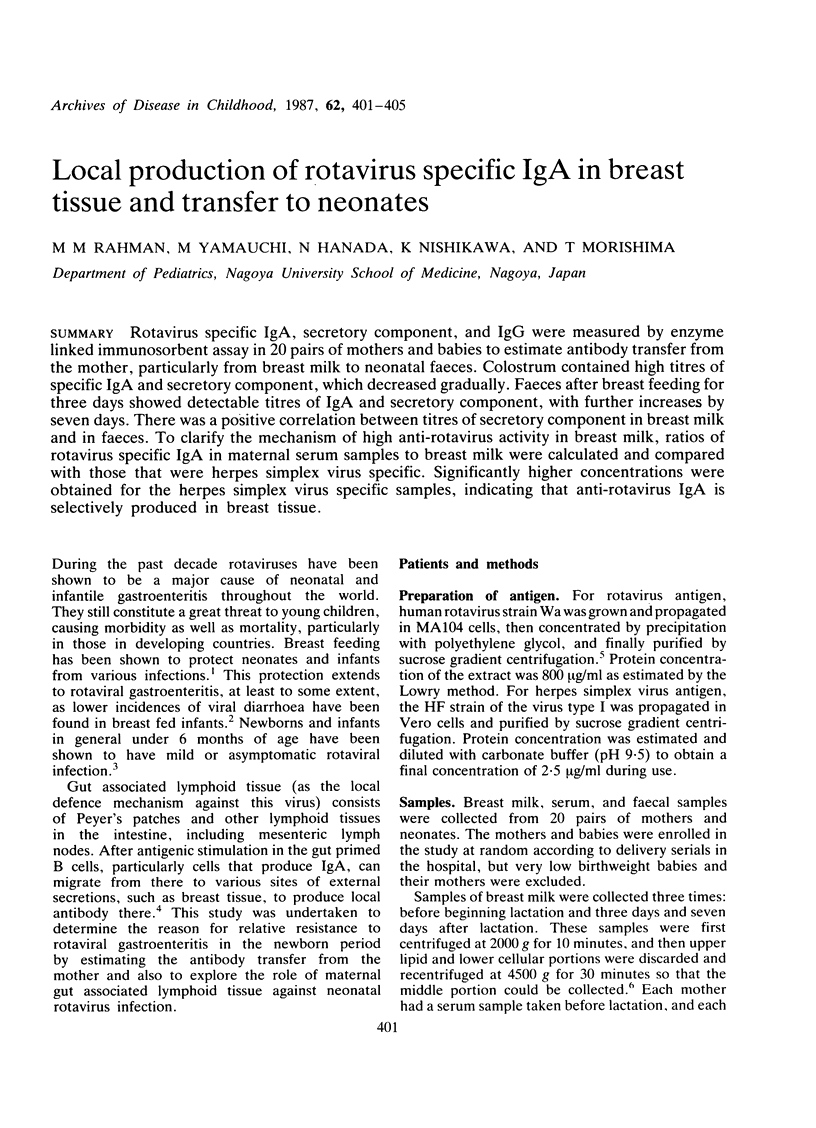
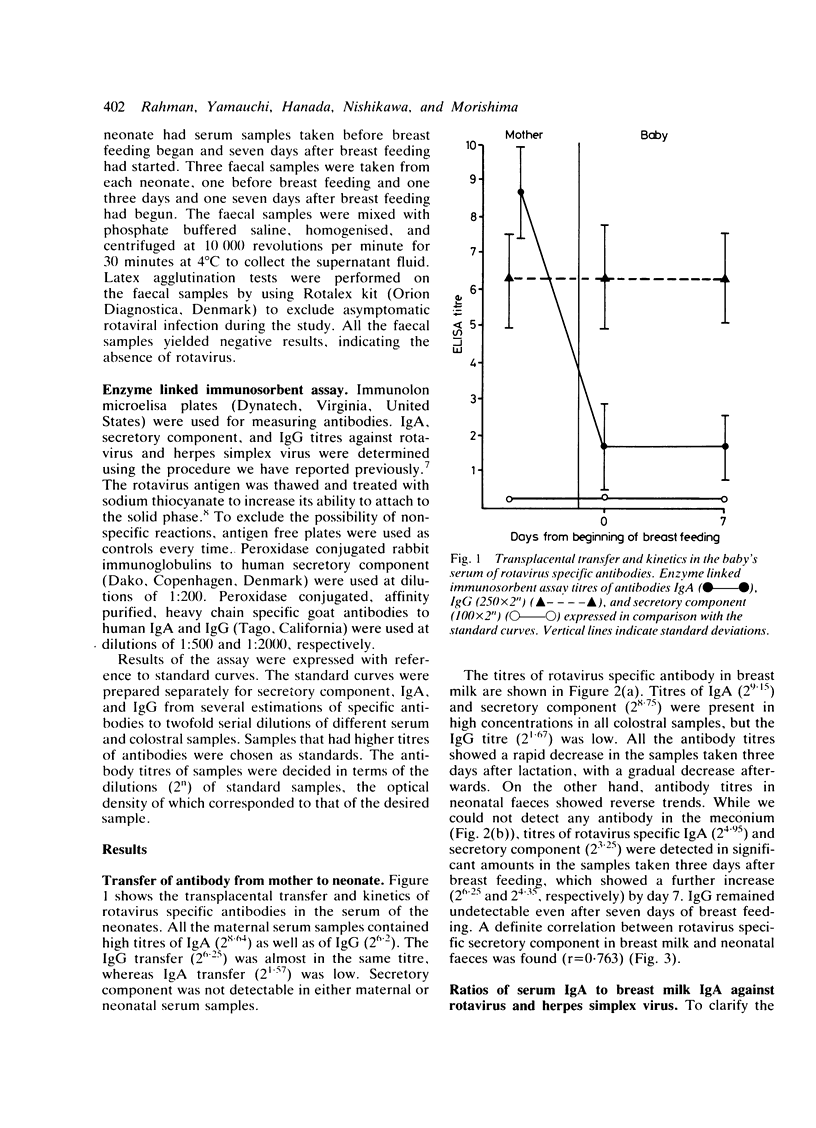
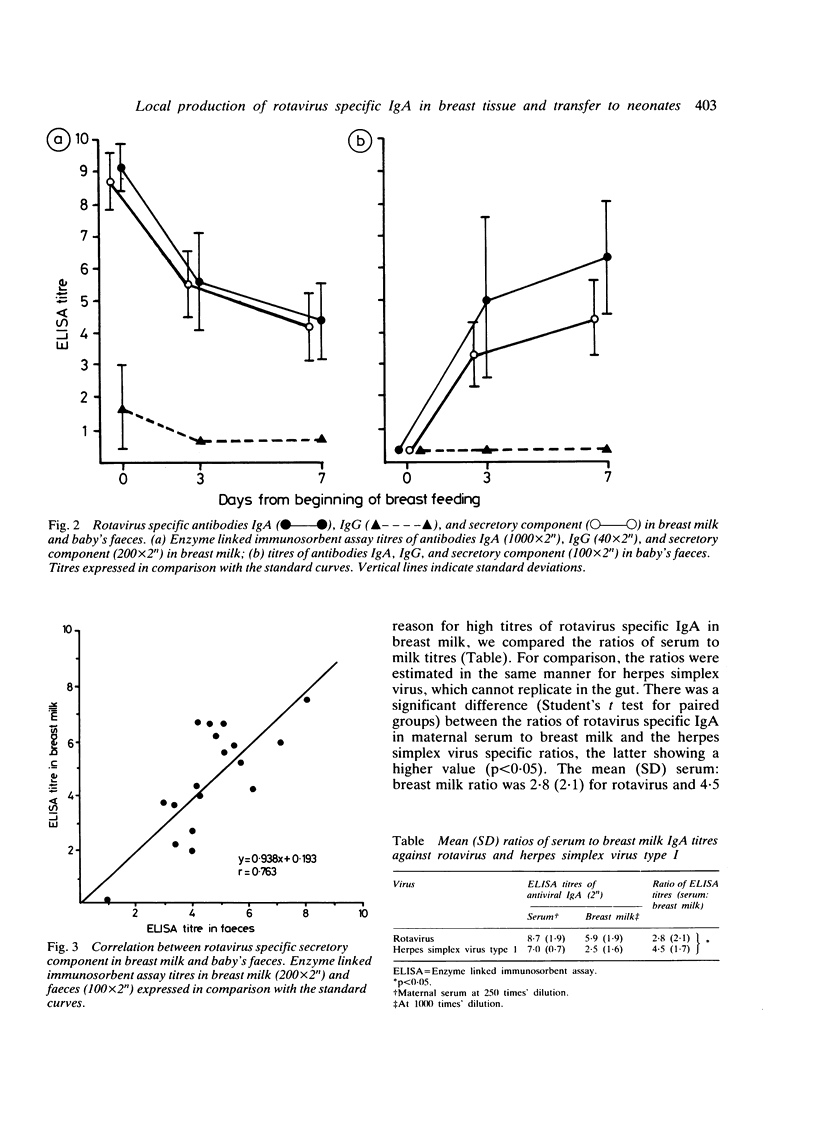
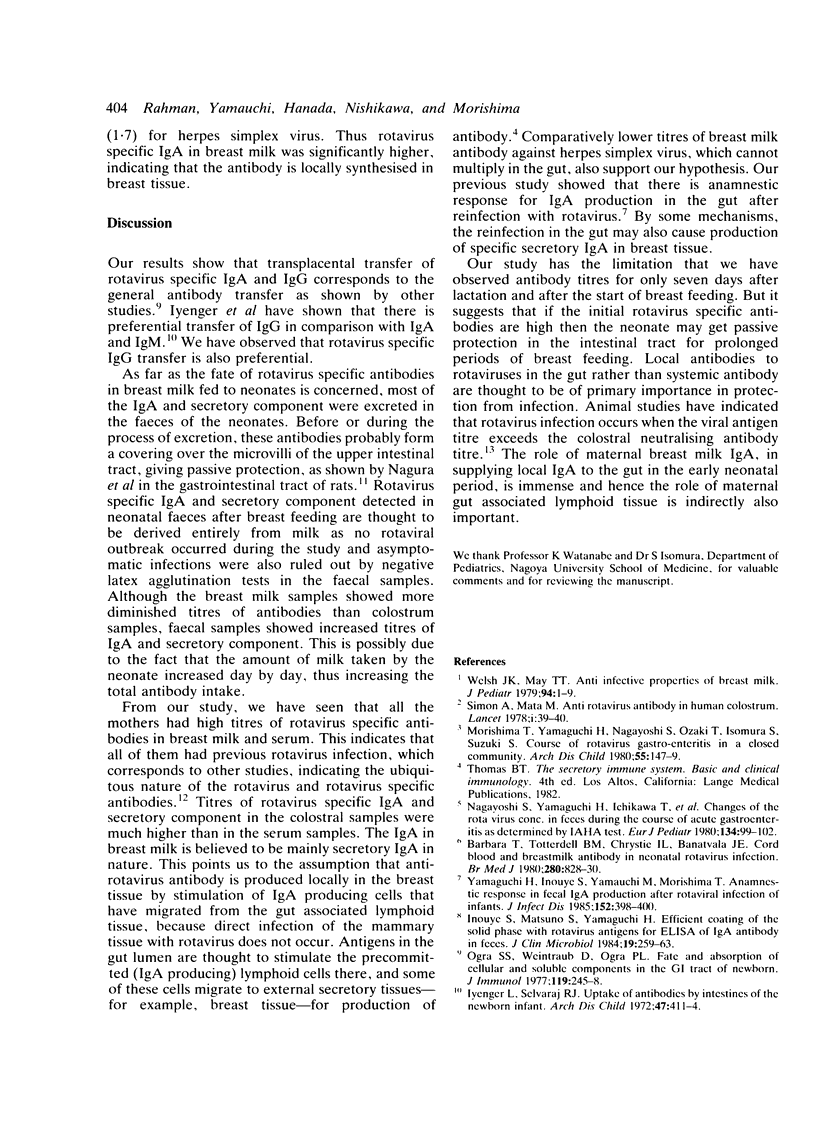
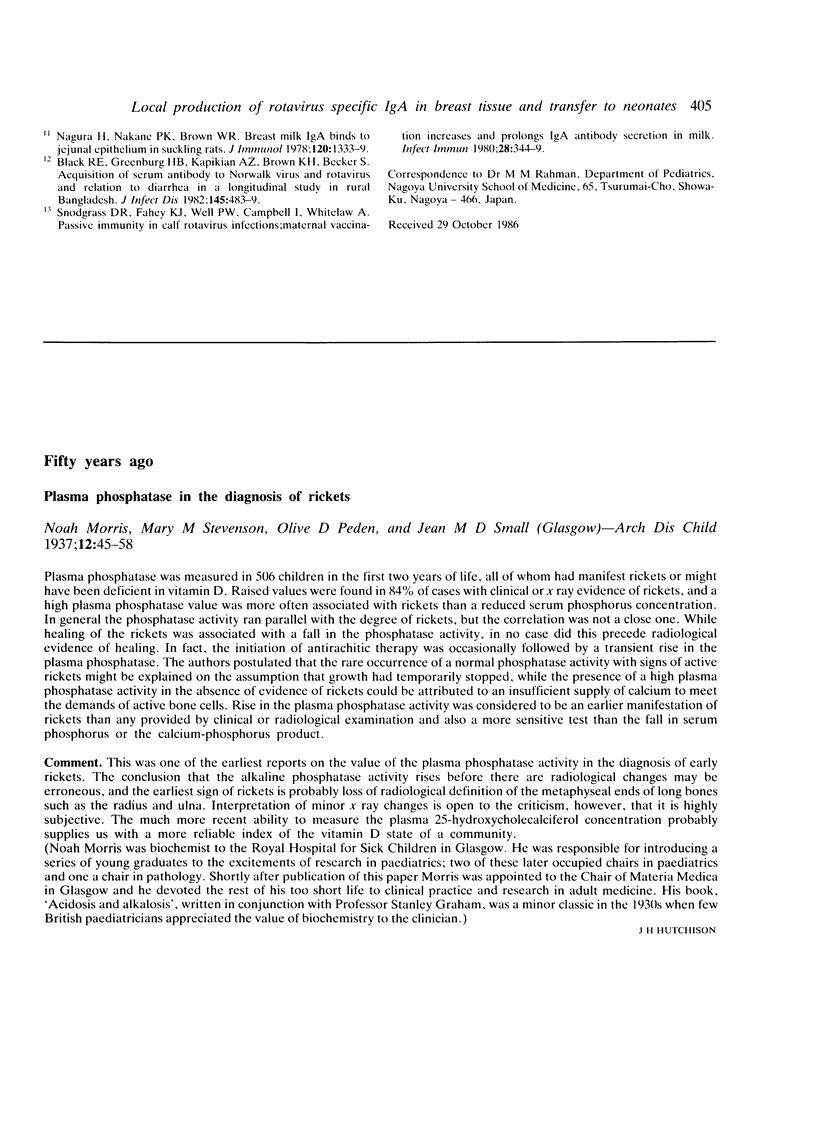
Selected References
These references are in PubMed. This may not be the complete list of references from this article.
- Inouye S., Matsuno S., Yamaguchi H. Efficient coating of the solid phase with rotavirus antigens for enzyme-linked immunosorbent assay of immunoglobulin A antibody in feces. J Clin Microbiol. 1984 Feb;19(2):259–263. doi: 10.1128/jcm.19.2.259-263.1984. [DOI] [PMC free article] [PubMed] [Google Scholar]
- Iyengar L., Selvaraj R. J. Intestinal absorption of immunoglobulins by newborn infants. Arch Dis Child. 1972 Jun;47(253):411–414. doi: 10.1136/adc.47.253.411. [DOI] [PMC free article] [PubMed] [Google Scholar]
- Morishima T., Yamaguchi H., Nagayoshi S., Ozaki T., Isomura S., Suzuki S. Course of rotavirus gastroenteritis in a closed community. Arch Dis Child. 1980 Feb;55(2):147–149. doi: 10.1136/adc.55.2.147. [DOI] [PMC free article] [PubMed] [Google Scholar]
- Nagayoshi S., Yamaguchi H., Ichikawa T., Miyazu M., Morishima T., Ozaki T., Isomura S., Suzuki S., Hoshino M. Changes of the rotavirus concentration in faeces during the course of acute gastroenteritis as determined by the immune adherence hemagglutination test. Eur J Pediatr. 1980 Aug;134(2):99–102. doi: 10.1007/BF01846024. [DOI] [PubMed] [Google Scholar]
- Nagura H., Nakane P. K., Brown W. R. Breast milk IgA binds to jejunal epithelium in suckling rats. J Immunol. 1978 Apr;120(4):1333–1339. [PubMed] [Google Scholar]
- Ogra S. S., Weintraub D., Ogra P. L. Immunologic aspects of human colostrum and milk. III. Fate and absorption of cellular and soluble components in the gastrointestinal tract of the newborn. J Immunol. 1977 Jul;119(1):245–248. [PubMed] [Google Scholar]
- Snodgrass D. R., Fahey K. J., Wells P. W., Campbell I., Whitelaw A. Passive immunity in calf rotavirus infections: maternal vaccination increases and prolongs immunoglobulin G1 antibody secretion in milk. Infect Immun. 1980 May;28(2):344–349. doi: 10.1128/iai.28.2.344-349.1980. [DOI] [PMC free article] [PubMed] [Google Scholar]
- Totterdell B. M., Chrystie I. L., Banatvala J. E. Cord blood and breast-milk antibodies in neonatal rotavirus infection. Br Med J. 1980 Mar 22;280(6217):828–830. doi: 10.1136/bmj.280.6217.828. [DOI] [PMC free article] [PubMed] [Google Scholar]
- Welsh J. K., May J. T. Anti-infective properties of breast milk. J Pediatr. 1979 Jan;94(1):1–9. doi: 10.1016/s0022-3476(79)80340-6. [DOI] [PubMed] [Google Scholar]
- Yamaguchi H., Inouye S., Yamauchi M., Morishima T., Matsuno S., Isomura S., Suzuki S. Anamnestic response in fecal IgA antibody production after rotaviral infection of infants. J Infect Dis. 1985 Aug;152(2):398–400. doi: 10.1093/infdis/152.2.398. [DOI] [PubMed] [Google Scholar]


